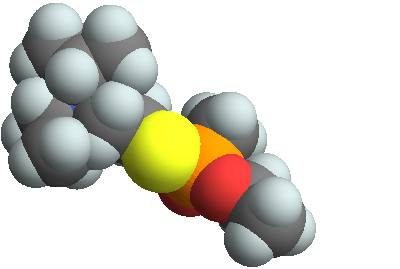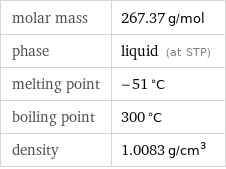Input interpretation

2-methylpentyl S-2-diethylaminoethylethylphosphonothiolate
Chemical names and formulas
![formula | C_11H_26NO_2PS name | 2-methylpentyl S-2-diethylaminoethylethylphosphonothiolate IUPAC name | N-[2-(ethoxy-methyl-phosphoryl)sulfanylethyl]-N-propan-2-yl-propan-2-amine alternate names | 2-methylpentyl S-2-diethylaminoethyl, n-ethylphosphonothioate | O-2-methylpentyl S-[2-(diethylamino)ethyl]ethylphosphonothiolate | Vx mass fractions | C (carbon) 49.4% | H (hydrogen) 9.8% | N (nitrogen) 5.24% | O (oxygen) 12% | P (phosphorus) 11.6% | S (sulfur) 12%](../image_source/d84669511b3722c4795590dc063548ae.png)
formula | C_11H_26NO_2PS name | 2-methylpentyl S-2-diethylaminoethylethylphosphonothiolate IUPAC name | N-[2-(ethoxy-methyl-phosphoryl)sulfanylethyl]-N-propan-2-yl-propan-2-amine alternate names | 2-methylpentyl S-2-diethylaminoethyl, n-ethylphosphonothioate | O-2-methylpentyl S-[2-(diethylamino)ethyl]ethylphosphonothiolate | Vx mass fractions | C (carbon) 49.4% | H (hydrogen) 9.8% | N (nitrogen) 5.24% | O (oxygen) 12% | P (phosphorus) 11.6% | S (sulfur) 12%
Lewis structure

Draw the Lewis structure of 2-methylpentyl S-2-diethylaminoethylethylphosphonothiolate. Start by drawing the overall structure of the molecule, ignoring potential double and triple bonds: Count the total valence electrons of the carbon (n_C, val = 4), hydrogen (n_H, val = 1), nitrogen (n_N, val = 5), oxygen (n_O, val = 6), phosphorus (n_P, val = 5), and sulfur (n_S, val = 6) atoms: 11 n_C, val + 26 n_H, val + n_N, val + 2 n_O, val + n_P, val + n_S, val = 98 Calculate the number of electrons needed to completely fill the valence shells for carbon (n_C, full = 8), hydrogen (n_H, full = 2), nitrogen (n_N, full = 8), oxygen (n_O, full = 8), phosphorus (n_P, full = 8), and sulfur (n_S, full = 8): 11 n_C, full + 26 n_H, full + n_N, full + 2 n_O, full + n_P, full + n_S, full = 180 Subtracting these two numbers shows that 180 - 98 = 82 bonding electrons are needed. Each bond has two electrons, so we expect that the above diagram has all the necessary bonds. However, to minimize formal charge oxygen wants 2 bonds. Identify the atom that wants additional bonds and the number of electrons remaining on each atom: In order to minimize their formal charge, atoms with large electronegativities can force atoms with smaller electronegativities on period 3 or higher to expand their valence shells. The electronegativities of the atoms are 2.19 (phosphorus), 2.20 (hydrogen), 2.55 (carbon), 2.58 (sulfur), 3.04 (nitrogen), and 3.44 (oxygen). Because the electronegativity of phosphorus is smaller than the electronegativity of oxygen, expand the valence shell of phosphorus to 5 bonds. Therefore we add a total of 1 bond to the diagram: Answer: | |
3D structure

3D structure
Basic properties

molar mass | 267.37 g/mol phase | liquid (at STP) melting point | -51 °C boiling point | 300 °C density | 1.0083 g/cm^3
Units

Liquid properties (at STP)

density | 1.0083 g/cm^3 vapor pressure | 3.5×10^-4 mmHg (at 25 °C)
Units

Thermodynamic properties

molar heat of vaporization | 56 kJ/mol specific heat of vaporization | 0.209 kJ/g (at STP)
Chemical identifiers

CAS number | 50782-69-9 Beilstein number | 1949015 PubChem CID number | 39793 SMILES identifier | CCOP(=O)(C)SCCN(C(C)C)C(C)C InChI identifier | InChI=1/C11H26NO2PS/c1-7-14-15(6, 13)16-9-8-12(10(2)3)11(4)5/h10-11H, 7-9H2, 1-6H3 RTECS number | TB1090000
Safety properties

flash point | 146 °C

DOT hazard class | 6.1 DOT numbers | 2810
Toxicity properties

RTECS classes | drug | reproductive effector | human data